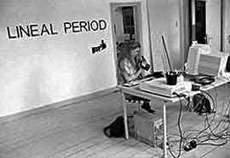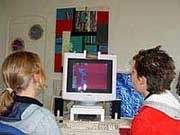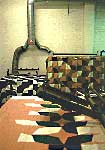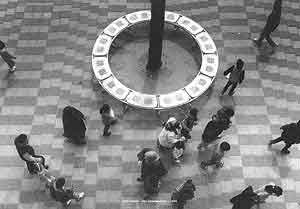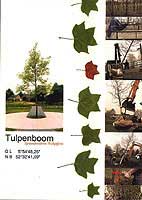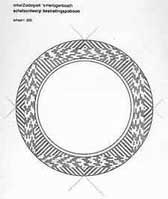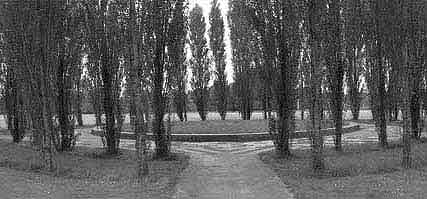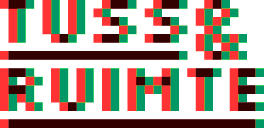| Visual Arts | The Netherlands | ||||||||||||||||||||||||||||||||||||||||||||||
BAFA © 2010. All material here is copyrighted. See conditions above. |
Leidi Haaijer
visual artist, The Netherlands. |
| A
survey of completed projects can be found at www.leidihaaijer.nl.
The site is developed and maintained by the artist herself. A cv is also included. | |||||||
| |||||||
| Since
1996 I have been working on the "Punten&Vlekken&Cirkels"(Points,
Spots & Circles -2000->) collection, an expanding work in which evolution manifests itself in a diversity of materials and techniques. Sometimes this is manifested as a particular theme such as "the blue series" where I showed a number of blue round forms. My choice and arrangement of this work always depends on the exhibiting environment and depending on the environment, new works will also develop. Some of the techniques used in this work are sculpted wood, pressed and reworked glass, etching, computer reworked photographic images, and ink, pencil and paint used in combinations with various materials. I have consciously recycled a lot of my work since leaving art school. | |||||||
The most recent
project is "The
Tower of Babel", a collaboration between 6 artists which was presented
in February 2003. The concept deals with public space and the neighbouring occupants.
The Tower of Babel was constructed out of slide material taken
by these (non-artist) neighbours and revealed the concept that each facade conceals its own tower of secrets. The artists considered it their task to reveal this, and a result was to create an interaction between the environment and its inhabitants. | |||||||
|
|||||||
|
"Plooibaar
Product - Formowalny Produkt - Pliable |
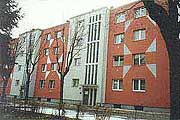 3 "Plooibaar Product - Formowalny Produkt - Pliable Product" where the design (in blue and white) has been executed by the city council onto appartment blocks in Piotrków Trybunakski, Poland in 2001. | ||||||
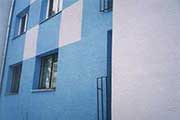 |
|||||||
| |||||||
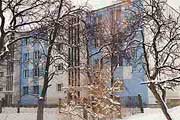 |
She had adapted designs from the Cdrom which used red, yellow and blue as the main colours. In February 2001 the Euro-Centre (the organisation for the integration of Poland into the European Union) invited us to give demostrations to teenagers and government administrators, to show them how they could use the "Pliable Product" as a means of the use of color and form (and particularly in the existing buildings) as part of their action "Kampania Koloru" which was about curating and caring for their city. | ||||||
| |||||||
| I
have been working with computers as part of my art practice since 1994.
While doing post-graduate study at the Jan van Ecyk Academy in 1986 I focussed on installations incorporating video, found objects, and the physcial act of drawing. For the installation, " 'Astand" (Icelandic for "A Situation") in a church I worked with an Icelandic sound artist who created loops of subliminal hum. Seven hundred and fifty gold-painted found chairs were spread organically across the whole church. |
|||||||
| |||||||
| |||||||
| "Cirkel van Pols" (Pols' Circle) in Zuiderpark, Den Bosch, The Netherlands. The circle was built in 1950s by Mr. Pols. The park was renovated in 1995 and I was asked to make the design for the circular pavement. |
|
|||||||||
|
|||||||||
|
Last but not least I will mention the installation "BeeldTaalproduction", (Image Language Production) presented in 2002. Displayed in Eindhoven, Holland, and supported by a computer program, this installation could be physically extended by the visitors. Structures could be composed on transparent materials by dragging selected characters on the screen of a monitor. The result could be printed and added to the installation. In this way the installation grew. | |||||||||
|
Arts Dialogue, Dintel 20, NL 7333 MC, Apeldoorn, The Netherlands email: bafa@bahai-library.com |
